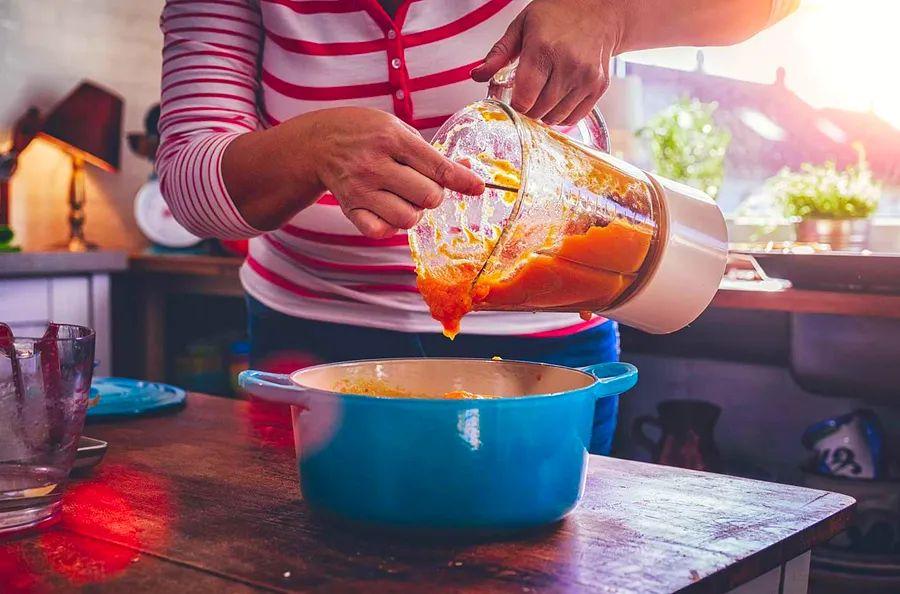Blender vs. Food Processor: How to Choose the Right Tool for the Job

When you're preparing a creamy soup or a flavorful pesto, you might reach for a blender, food processor, or immersion blender. While they all seem similar, each one has a unique role in the kitchen.
Understand the strengths of each appliance and know when to turn to them for different tasks:
Food Processor
A food processor is equipped with a robust motor and sharp blades, designed to chop and slice ingredients with precision.
"Food processors excel at handling dry ingredients. Think of it as your kitchen assistant—chopping, slicing, dicing, mixing, and grinding ingredients to speed up meal prep," says Sofia Norton, RD.
What can you use it for? Mincing vegetables, shredding potatoes and cheese, grinding nuts, puréeing food, processing meat, and kneading dough.
"Unlike blenders, food processors don't require liquid to operate. However, they should never be overfilled," explains Norton. "This makes them less suited for making large batches of liquid-based meals like soups and smoothies," she adds.
You'll also need plenty of counter space for a food processor. "Due to their powerful motors and large capacities, they take up considerable space. Many models also come with extra blades and attachments, which can add to the clutter," Norton points out. However, mini food processors are available if space is tight, so you can opt for a smaller version.
Countertop Blender
Unlike food processors, traditional blenders don't rely on ultra-sharp blades. "Their strength comes from powerful motors, large-capacity jars, and — most importantly — the use of liquid," explains Norton. This means you can't simply throw dry ingredients in and expect a smooth, silky result as you would with a food processor.
"Blenders are ideal when you need to purée or liquefy large quantities of food," Norton says. A countertop blender is perfect for making smoothies, soups, sorbets, sauces, crushed ice drinks, and more. Plus, they take up less space and are easier to clean compared to other appliances.
"Modern blenders with 'chop' or 'pulse' functions can do some of the tasks typically handled by a food processor," says Norton. "However, they may not be as efficient or quick as a food processor in performing these functions."
Immersion Blender
If you're tight on space, an immersion blender could be a game-changer. "It's the most compact option and creates minimal mess," Norton points out. "However, it's the least powerful of the bunch, with a smaller motor and gentler blades."
How can you make the most of it? Reach for the immersion blender to purée soups, sauces, and salad dressings. "Simply submerge the blender into your pot of soup and blend until smooth. This tool is perfect for mixing, liquefying, and puréeing soft to semi-soft ingredients," she explains. Like personal blenders, immersion blenders are also great for making homemade mayonnaise, combining and aerating the ingredients in one go.

1

2

3

4

5
Evaluation :
5/5